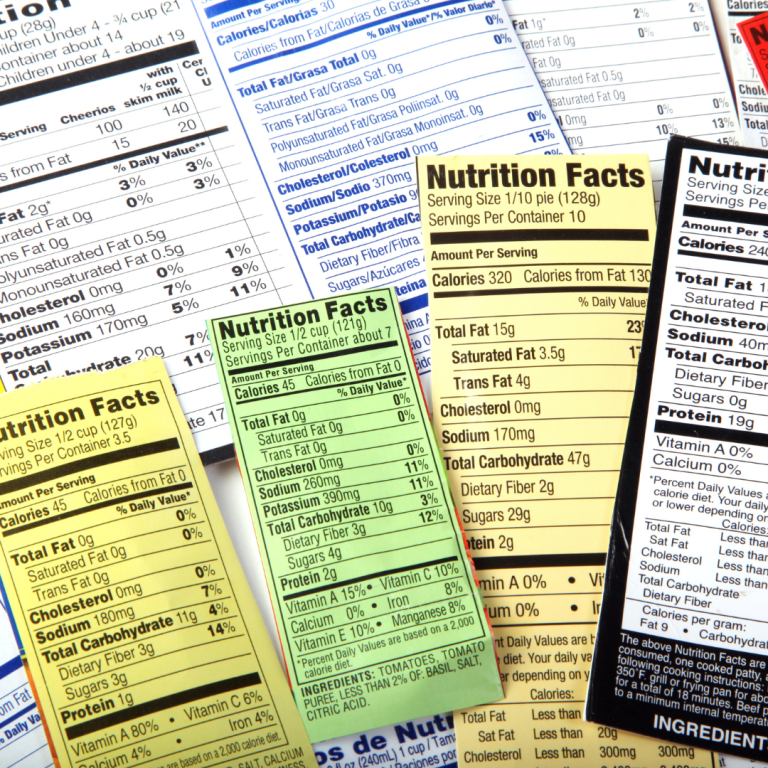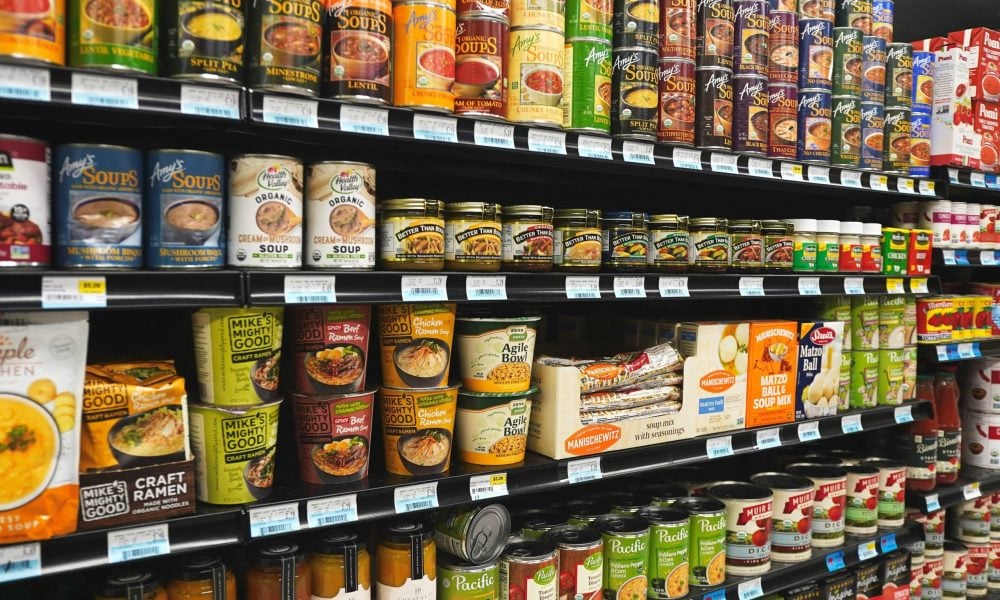Precautionary allergen labelling (PAL) is used in countries worldwide to help consumers make more informed choices about which products they eat by disclosing the potential unintentional presence of allergens. In recent years, there has been much debate about the issues that may arise from how PAL is currently used, with new suggestions about how the food allergen labelling method may be used.
While Precautionary Allergen Labelling (PAL) is not mandated by law in the U.S., other regions, such as the UK, enforce stricter allergen labelling requirements. However, the use of PAL remains a voluntary measure, even within these regulated frameworks.

The U.S. Major Allergens, more typically known as the “Big Nine Allergens”, were initially known as the Big Eight Allergens and introduced on January 1, 2006, through the Food Allergen Labeling and Consumer Protection Act (FALCPA) after eight food allergens were identified as causing the majority of allergic reactions in the country. The Food Allergy Safety Treatment Education and Research (FASTER) Act introduced Sesame on January 1st, 2023. The complete list of the big nine allergens in the United States is as follows:
- Crustacean shellfish
- Wheat
- Soybeans
- Fish
- Milk from domesticated cows, goats, sheep, or other ruminants.
- Tree nuts
- Eggs from domesticated chickens, ducks, geese, quail, and other fowl
- Peanuts
- Sesame
Through the FASTER and FALCPA labelling requirements, food manufacturers and retailers are legally obligated to provide clear allergen information for packaged food, beverages, and dietary supplements that may contain the big nine allergens. Information on how this applies to each of the major allergens can be found by looking at our ‘US Big Nine Allergens Hub.’
In both the UK and EU, the same list of allergens—commonly referred to in the UK as the ‘14 Major Allergens’ must be clearly identified on food labels. These were originally introduced under Regulation (EU) No. 1169/2011. In the UK, this regulation was adopted into domestic law through the Food Information Regulations 2014, where it continues to apply post-Brexit.
The 14 major allergens include:
- Cereals containing gluten
- Molluscs
- Crustaceans
- Lupin
- Peanuts
- Milk
- Sesame
- Celery
- Soybeans
- Mustard
- Eggs
- Sulphites
- Fish
- Tree Nuts
With an increasing amount of the public having food allergies (FARE estimates 33 million Americans have at least one food allergy, while the FSA estimates that approximately 2.4 million people in the UK have a diagnosed food allergy), complying with food labelling requirements will give you greater appeal to an often-overlooked audience while ensuring you avoid legal repercussions from incorrect allergen food labels such as Food Recalls. Food industry recalls can be time-consuming and costly, which you can learn more about on our dedicated ‘Food Recall’ page.
Businesses can take many steps to ensure they have adequate food safety and allergen management processes for identifying allergens in food data and correctly displaying them on food packaging, such as adopting Libereat’s food safety technology. However, the spread of unintentional allergens can be more challenging to solve, causing difficulty for consumers and food manufacturers alike.
Cross-Contact and the Use of Precautionary Allergen Labeling.

Foods containing different major allergens may be processed in the same food production facility when food is manufactured. While hygienic practices such as washing all cooking equipment after each use can reduce the risk of these allergens transferring between foods in what’s known as “cross-contact,” there is always an inherent risk that cross-contact may occur.
While not legally required to comply with current food safety regulations and standards, many food businesses acknowledge this risk by implementing precautionary allergen labelling (PAL). This label typically includes a statement near the ingredients list that the product in question “may contain” allergens from another product made in the same facility.
PAL statements are also used in the UK and are usually presented with a “may contain” statement. They are voluntary and not regulated by the Food Standards Agency (FSA), though they are encouraged in use, only when there is a risk of allergen-cross contact that cannot be removed.
This can be a necessary step to help further food-hypersensitive consumers stay safe and avoid potentially deadly food allergens, but some food businesses have chosen to use precautionary allergen labelling in a way that needlessly restricts consumer choice.
As PAL statements are not legally required, their use is also not regulated by the Food and Drug Administration, meaning food businesses can state their products have the potential to contain any number of the big nine allergens, even if there is no chance of this being the case.
For example, a food product is unlikely to unintentionally contain sesame if sesame isn’t present in the manufacturing facility. One 2017 study found that of 78 dark chocolate products, two-thirds contained a PAL statement regarding peanuts, but only four contained the allergen.
PAL statements are used to declare an excessive amount of significant allergens, mainly for food businesses to give themselves legal protection against liability, ensuring that if cross-contact does occur, no matter how unlikely it is, the company has attempted to warn consumers of this possibility.
The consequence for consumers is that they have a limited selection of products to choose from, as many are not willing to risk choosing food that may contain an allergen to which they are allergic. Many members of the public will also be unaware of this scandal and wrongfully assume that PAL statements are regulated, believing them to be more trustworthy than they are.
With no way to tell if a PAL statement is giving meaningful advice or a way to protect against legal repercussions, those with food hypersensitivities are potentially left with fewer choices when shopping than ever before.
Can Precautionary Allergen Labeling Be Improved to Help Consumers?

In recent years, committees and organisations have looked at how PAL statements can be improved or potentially regulated in the future to avoid the current issues facing consumers. Since 2022, the UN’s Food and Agriculture Organization and the World Health Organization have been looking at identifying and establishing threshold levels for major allergens, which is the minimum amount of an allergen needed to be present to trigger an allergic reaction and can vary depending on the allergen in question.
One idea is that companies should be required to determine the allergen concentration in their products through various lab techniques and visual inspections. If the amount of an allergen present through cross-contact matches or exceeds the threshold limit, a PAL statement should be used.
Threshold-based PAL statements have become increasingly popular recently, with many experts agreeing that it would be an improvement over current methods, and some countries, such as The Netherlands, are planning on implementing a similar system in the coming years. Similarly, some food businesses have voluntarily adopted a Voluntary Incidental Trace Allergen Labelling program based on allergen threshold levels.
The Voluntary Incidental Trace Allergen Labelling (VITAL) program in Australia and New Zealand is a well-established example of a threshold-based system.
At LiberEat, we’ll be interested in seeing more businesses either move to this new threshold system or rethink their implementation of precautionary allergen labels to give consumers a greater choice when purchasing food products. In the meantime, consumers need to understand precisely how PAL statements work and their lack of regulation in order to make informed choices.
Many food-hypersensitive/food-allergic consumers rely on “free-from” labelling, which often conflicts with PAL statements.
We’ll be writing more about any changes in precautionary allergen labelling (PAL) or any other important news in food safety and food law. Follow our LinkedIn page to keep updated with our latest articles. See you soon!
LiberEat Allergen Detection Software
LiberEat’s food safety software helps prevent errors in allergen data on supplier specifications, website and app data, food packaging, and menus. This can help protect your customers from the major allergens—find out more about these with our allergen information hub.
Correctly managing and reviewing your allergen data is essential for keeping you and your customers safe.
Errors in allergen data can cause potentially devastating allergic reactions and expensive product recalls. For peace of mind, take a look at our contact us form to learn how LiberEat can help protect your business.

